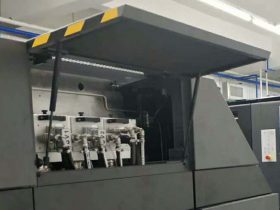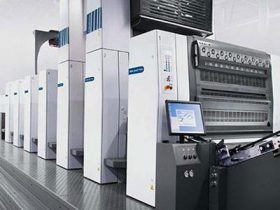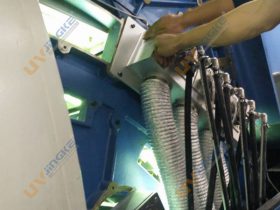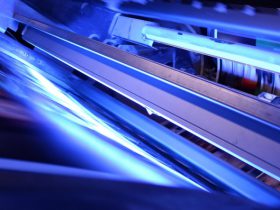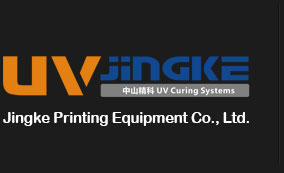At an inertization process the oxygen (O2) in the irradiated area is displaced by an inert gas, usually nitrogen (N2).
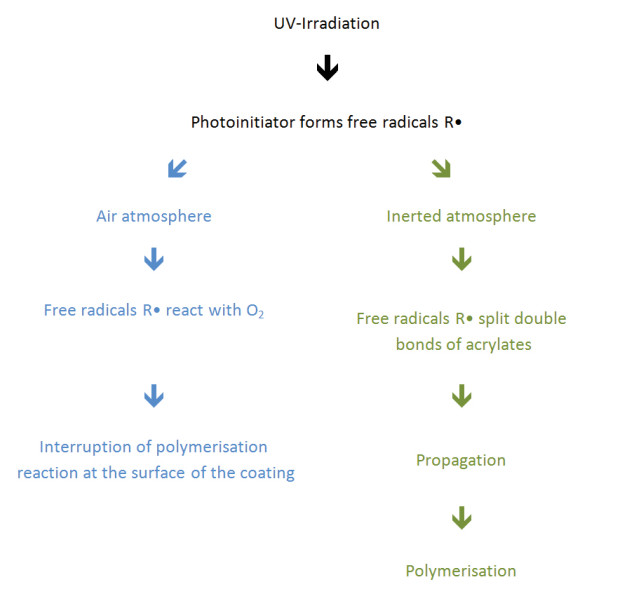
The generated radicals out of the photo initiators preferably react with O2 molecules in the atmospheric oxygen, which can lead to insuffcient surface cross-linking. By eliminating the atmospheric oxygen with inertization, the polymerization process can run undisturbed. The positive effects of inertization on the production process are various:
- excellent surface-curing and outstanding characteristics
- higher cross-linking levels, no post-curing
- less UV irradiation required and increased production speed
- lower amounts of photo initiator levels in UV ink, thus cost savings
- less migration because of signifcantly lower amounts of photo initiators and complete curing
- smell reduction
- less yellowing
- even "problematic colours" like full surface white can run at high speeds
- reduced ozone production

Jingke inert gas UV curing system advantages
